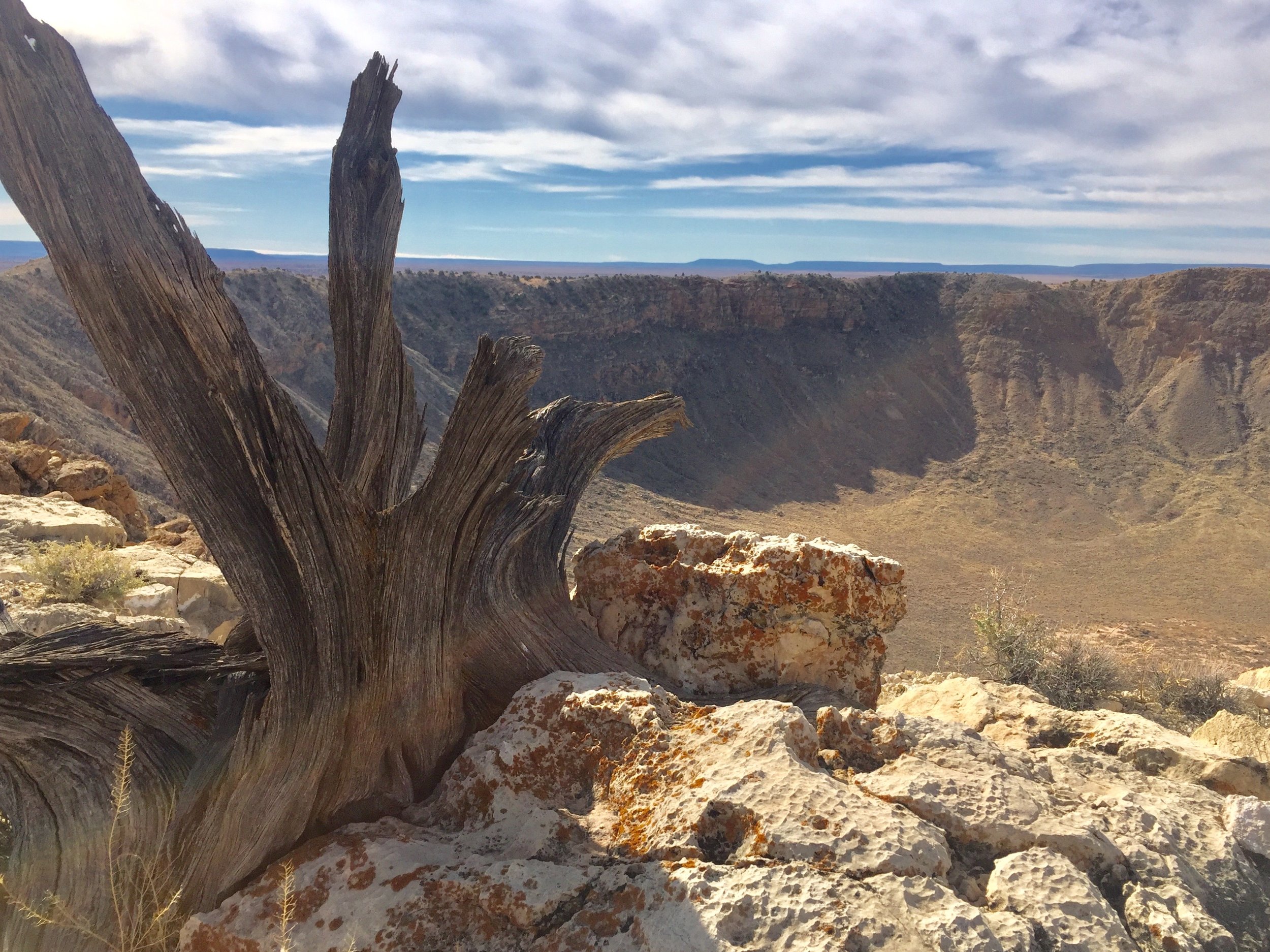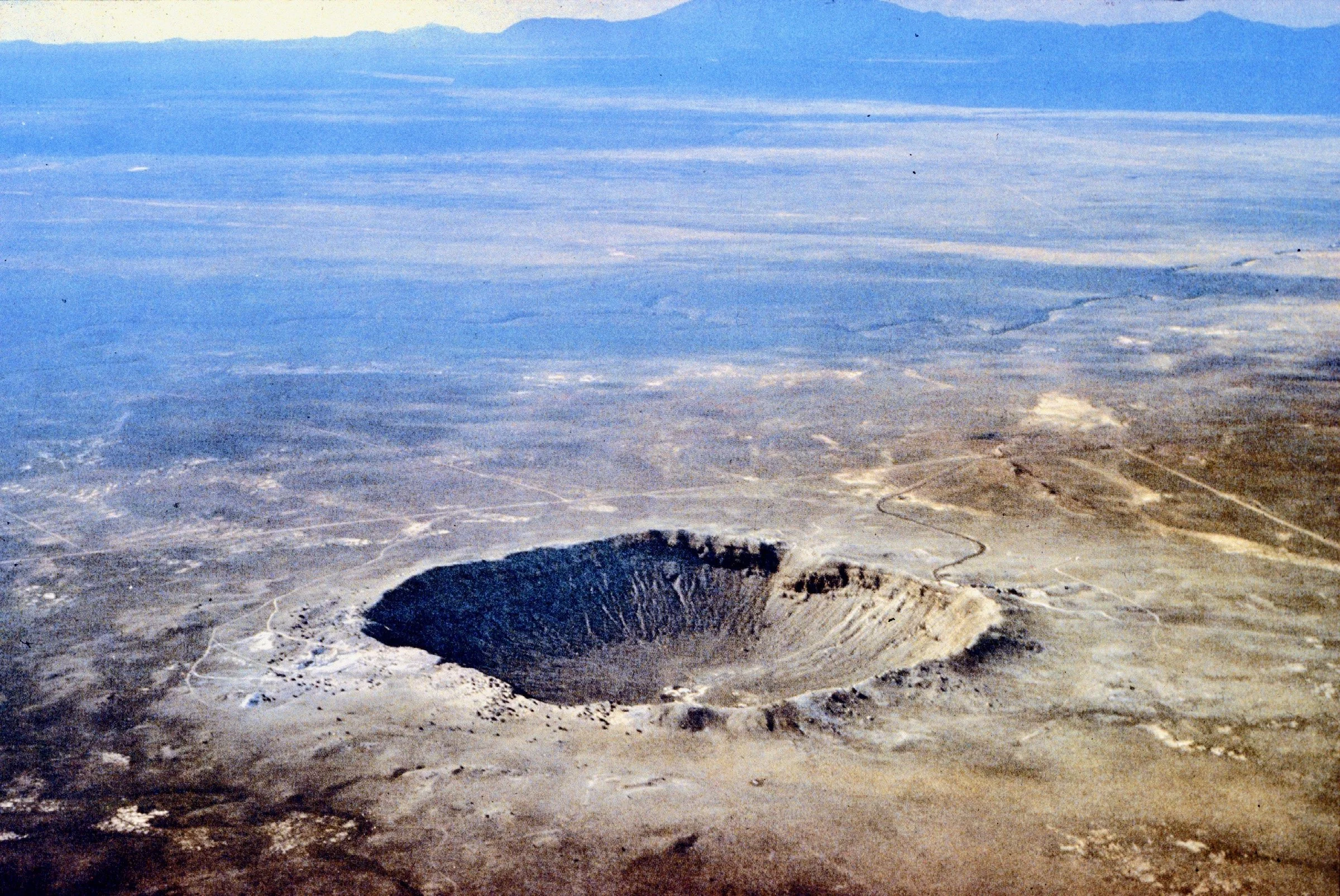
Crater FAQs
-
The crater is about 1 mile wide and 570 ft deep.
-
About 37 mi east of Flagstaff and 18 mi west of Winslow in the high desert of northern Arizona, United States. https://barringercrater.com/for-visitors
-
About 50,000 years ago, a 30-50 meter diameter iron asteroid, traveling about 20 km/second, smashed into what is now the Arizona USA desert. The explosion was equal to 2.5 megatons of TNT, displacing 175 million tons of rock!
-
Over the years, geologists and other scientists have identified a number of pieces of evidence pointing to a meteoritic impact. These include overturned rock layers around the crater, rocks that have been deformed by extreme temperature and pressure, and specific minerals created by meteoritic impacts.
-
The meteorite was made of nickel-iron and is estimated to have been about 45 meters (150 ft) across, weighing about 270,000 metric tons (300,000 tons).
-
Scientists now believe that most of the meteorite vaporized on impact. Small meteoritic fragments have been found scattered around the crater. One of the largest pieces is in the visitor center, available all to touch!
-
There are several paved paths and viewing platforms along the rim of the crater, but due to erosion and slope instability, the public is not permitted to climb to the bottom.
-
The Barringer Crater Company was founded by D. Moreau Barringer in 1903, and his descendants now in their sixth generation, own and operate the company under the same guiding principles which he so strongly advocated: preservation and science
-
The Holsinger Meteorite, the largest single fragment from what caused the crater, is open to touch at the visitor center!

